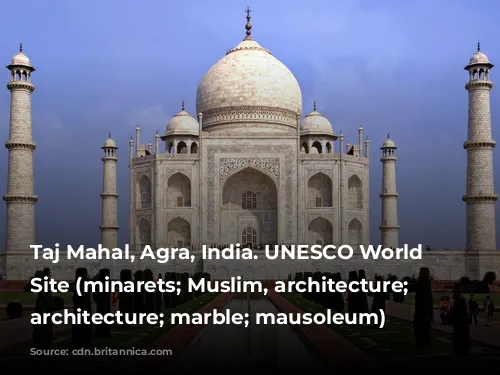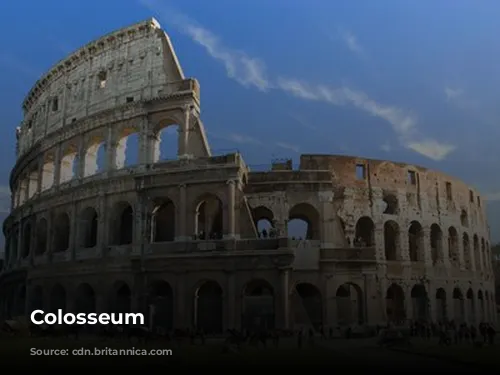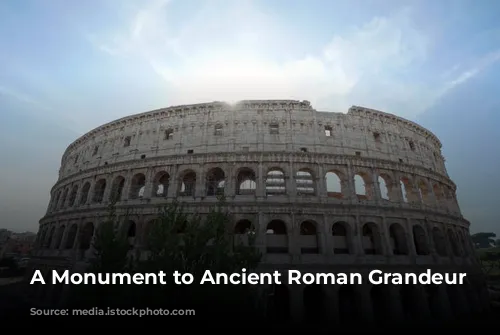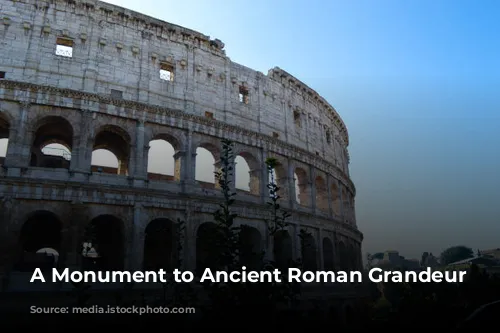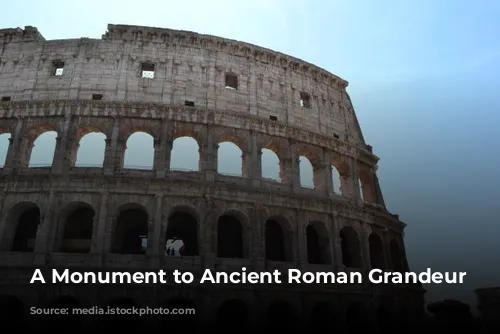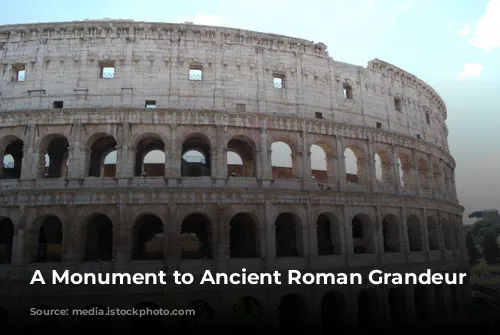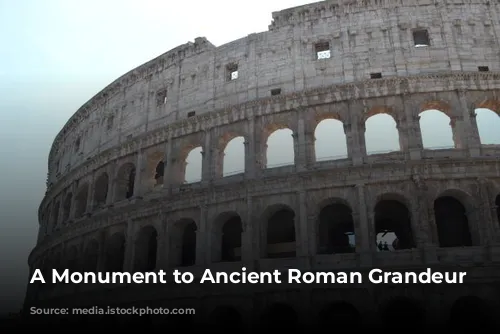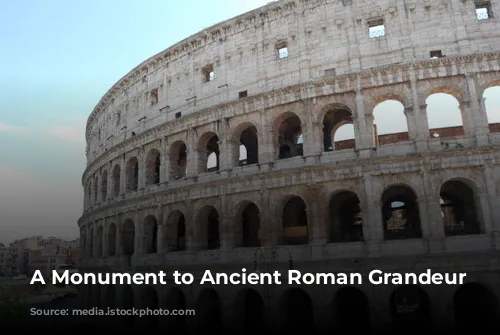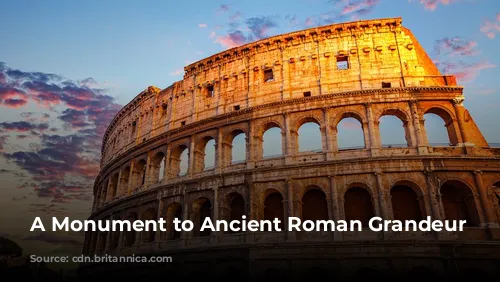The Colosseum, a majestic structure that stands tall in the heart of Rome, is a testament to the architectural and engineering brilliance of the Roman Empire. This ancient marvel, one of the few surviving structures from that era, is a beacon of history, drawing millions of visitors each year and contributing significantly to Italy’s tourism revenue. In 2018 alone, the Colosseum, alongside the Roman Forum and Palatine Hill, generated a remarkable $63.3 million (€53.8 million), solidifying its position as Italy’s top tourist attraction.
The Colosseum’s journey through time is a captivating tale of both splendor and neglect. After the fall of the Western Roman Empire, this once-grand arena fell into disrepair. The 12th century saw the Frangipane and Annibaldi families claim it as their fortress, repurposing the historic site for their own needs. The late 15th century brought a new era of neglect, with Pope Alexander VI granting permission to use the Colosseum as a quarry. The Colosseum’s grandeur was stripped away, its stones plundered to build other structures. After over a thousand years of such neglect, the 1990s saw the beginning of state-funded restoration efforts, a testament to the enduring legacy of this iconic landmark.
A Symbol of Imperial Might
The Colosseum’s birth was intricately intertwined with the Roman Empire’s desire to revitalize Rome after the turbulent year of the Four Emperors in 69 CE. Emperor Vespasian, who sought to create a spectacle worthy of the empire’s power, envisioned the Colosseum as a grand entertainment venue, a stage for gladiator fights, animal hunts, and even mock naval battles. The Colosseum was meant to showcase the empire’s might, a beacon of Roman power and a symbol of their mastery over the known world.
The construction of the Colosseum began under Emperor Vespasian between 70 and 72 CE, and the completed structure was dedicated in 80 CE by his son and successor, Titus. Titus’s victory in the Siege of Jerusalem provided the financial backing for the arena, built using funds seized from the conquered city. Sadly, the construction of the Colosseum was marked by the use of Jewish slaves from Judaea, a somber reminder of the empire’s brutal power dynamics. The Colosseum’s fourth story was added in 82 CE by Emperor Domitian, further enhancing the structure’s grandeur.
An Architectural Masterpiece
The Colosseum, also known as the Flavian Amphitheatre, is a testament to Roman architectural genius. Built by the Flavian emperors, the arena is an elliptical structure, towering four stories high at its peak. Constructed from stone, concrete, and tuff, the Colosseum measures 620 by 513 feet (189 by 156 meters), offering space for up to 50,000 spectators. Its imposing size and intricate design, along with its historical significance, solidify the Colosseum’s place as a pinnacle of Roman architecture and engineering.
The Colosseum’s location, just east of the Palatine Hill, was strategically chosen to replace the artificial lake that graced Nero’s Golden House. Emperor Vespasian, who ascended to the throne from humble beginnings, replaced the tyrannical emperor’s private lake with a public amphitheater, a deliberate statement of his commitment to the Roman people. The Colosseum stands as a symbol of the Flavian dynasty’s ambition to build a new era for Rome, one that embraced the public and celebrated Roman unity.
A Stage for Spectacle and Tragedy
The Colosseum was dedicated in 80 CE by Titus with a 100-day celebration of games, a testament to its role as a grand entertainment venue. Unlike earlier amphitheaters, which were often built into hillsides for added support, the Colosseum stands as a freestanding structure of stone and concrete. Its impressive scale, measuring 620 by 513 feet (189 by 156 meters), was made possible by the innovative use of barrel vaults and groin vaults. The three lower levels of the arena were adorned with arcades framed by engaged columns, following the Doric, Ionic, and Corinthian orders. This rising arrangement of columns became a cornerstone of Renaissance architecture, influencing the development of classical architecture for centuries to come.
The Colosseum’s construction was not merely about grandeur but also about functionality. Its intricate design allowed for the seating of approximately 50,000 spectators. To shield them from the sun’s glare, a massive retractable awning, known as the velarium, was deployed. This awe-inspiring system of masts, supported by corbels embedded in the Colosseum’s uppermost story, required the skill and strength of hundreds of Roman sailors to manipulate its rigging. The velarium, a testament to Roman ingenuity, ensured that spectators could enjoy the spectacle without suffering from the harsh Roman sun.
The Colosseum became a stage for both spectacle and tragedy. Thousands of gladiatorial combats, featuring hand-to-hand combat, animal hunts, and even mock naval engagements, unfolded within its walls. The arena’s roar, the cheers of the crowd, and the cries of the fallen echoed through its massive structure. While the Colosseum’s role in the martyrdom of early Christians is debated, its use as a stage for gladiatorial contests and other spectacles paints a vivid picture of Roman society.
Enduring Legacy
Over the centuries, the Colosseum faced periods of both glory and decline. In medieval times, it served as a church and a fortress, its original purpose forgotten. Sadly, the Colosseum fell victim to lightning strikes, earthquakes, and the destructive force of vandalism and pollution. The once-splendid marble seats and decorative materials were plundered, leaving behind a shadow of its former self. After more than 1,000 years of neglect, the Colosseum was finally recognized for its historical significance, and efforts to preserve this iconic structure began in earnest. The 19th century saw preservation efforts led by Pius VIII, and the 1990s witnessed a major restoration project, restoring the Colosseum to its former glory.
Today, the Colosseum remains a beacon of Roman history, attracting millions of visitors annually. It stands as a testament to the grandeur and ingenuity of the Roman Empire, and its enduring legacy continues to inspire awe and wonder in those who behold it. The Colosseum’s story is a reminder of the cyclical nature of history, a tale of both triumphs and tragedies, of glorious achievements and periods of decline. Yet, it also stands as a powerful reminder that even in the face of time’s relentless march, the spirit of the past can endure, inspiring generations to come.
The Colosseum, a symbol of Roman power, architectural brilliance, and the captivating interplay of history and human nature, continues to stand as a symbol of the Roman Empire’s enduring legacy. Its towering structure, a testament to the ingenuity of its builders, inspires a profound sense of awe and respect, inviting us to reflect on the rise and fall of empires, the enduring power of human ambition, and the timeless beauty of ancient architecture.
